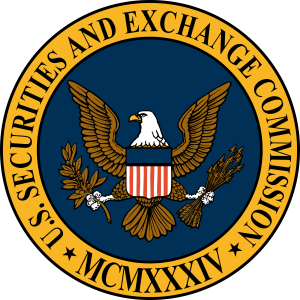The CFTC began publishing rules about Swap Data Reporting in 2011, and we’ve come a very long way since then. Just read any of our blogs on SDR data and you’ll realize there is a world of data now on this once-opaque market.
The SEC, however, took it a bit easier in their rulemaking for the reporting of swaps under their jurisdiction. It wasn’t until February 2015 that they put out their final rule that requires swaps to be reported to an SDR.
I wanted to get a handle on their rules in anticipation of being able to begin reporting on this market. So of course I dove into hundreds of pages of various legislation. I will try to digest it for you below.
DEFINITIONS

First, let’s get some basic terminology straight. If you know the CFTC lingo for swaps, all you need to do is pre-pend an “SB” to your favorite acronym. But the majors:
- SBS – Security Based Swap. I tend to think of single name credit default swaps, but technically other swaps like total return equity (single name) swaps should be included as well. Interesting as well that the SEC leaves the door open for other asset classes outside of CDS and Equity, not sure what that would be.
- SBSDR – Doesn’t roll off the tongue, but Security Based Swap Data Repository
- SBSD – Securities Based Swap Dealer
- MSBSP – Major Securities Based Swap Participant (bonus points if you realized this is not just SB+MSP)
THE RULES
There were actually 3 rules published in February of 2015:
- Final Rule: SBSDR Registration, Duties, Core Principles (467 pages).
- Final Rule: Reporting / Dissemination final rule (644 pages).
- Proposed Changes to Final Rule #2: Reporting / Dissemination Proposed Rule / Guidance (245 pages).
WHAT THE RULES SAY
I’ll start with #1 – the SBSDR Registration rule. Fairly boring for someone like me who primarily cares about the public data that will come out of an SBSDR. This covers how to register, and a bunch of conformities and principles, like needing to have a Chief Compliance Officer. Read this only if you want to start an SDR. I was interested to see any language on fees, and it seems to say you must make any fees “Fair” and apply them consistently across participants.
The interesting document is #2, as this details what has to be reported to SBSDR’s, what has to be publicly disseminated, and sets out obligations for SBSDR’s to generally do more than just regurgitate data that was reported to them.
Document #3 is quite oddball. It’s basically a suggested update to Document #2, where it proposes language for sections that were left as “[Reserved]” in the Final Rule.
So let me step through the key points. Generally it is much the same as CFTC SDR reporting but with some tweaks. The highlights:
- The reporting counterparty is the SEF (if executed on venue) or a dealer (generally the same as CFTC). Cleared trades, after the initial execution report, get reported by the DCO (presumably to the SBSDR of their choice) but of course not publicly disseminated (the original execution is still reported just not the clearing trades).
- §242.901 lays out public dissemination obligations. SBSDR’s must disseminate “Primary Trade Information”:
- Product ID is to be used, if there is one. Presumably like a CUSIP. Otherwise specific terms (underlying asset, effective/maturity dates, indices, etc)
- Price
- If the trade details reported are not enough for someone to price the trade, then a flag to say that. This is akin to the CFTC “other price effecting term” flag.
- A flag for dealer-to-dealer! (a notable improvement to CFTC SDR)
- It claims that trade lifecycle events will be publicly disseminated, it seems akin to the CFTC termination events we see on the public tape, but in the world of equity and credit this might be stock splits, credit events, etc.
- Any flags that the SBSDR has deemed relevant (More on this later)
- Platform (eg SEF) IDs and clearing house names are required for private reports as part of “Secondary Trade Information”, but not to be publicly disseminated.
- Having read through various SEC documents, it seems the SEC did not feel comfortable with the effects that public dissemination could have on liquidity. Hence they seem to not have defined the block trade rule as yet, though they claim they know they have to at some point. This has a few implications:
- While the CFTC has “As-Soon-As-Technologically-Practicable” for reporting trades (meaning immediately reported or 15 minutes for blocks), the SEC went with a 24 hours delay across the board.
- Practically speaking, the SBSDR always has to disseminate the trade immediately, however the reporting counterparty has 24 hours to submit it to the SBSDR. (I do wonder what an execution venue would do – report it right away or hold onto it for 24 hours?)
- This does, however, imply that trades could be reported and disseminated immediately. The reporting counterparty will dictate when it is reported.
- It does not appear that any trade sizes will be capped (which makes sense because it’s 24 hour delayed, but is a nice transparency enhancement compared to CFTC rules)
- SEC has allowed and required SBSDR’s to define fields and submission formats (and publish them). They’ve also asked the SBSDR and participants to police it – so if something is missing, the SBSDR has to go back to the dealer/reporting counterparty and ask for it – and the dealer has 24 hours to comply
- No private daily valuation reporting (the CFTC has this requirement for private data)
- Some backloading of trades that were dealt after 21 July 2010. Unfortunately however, these would not be publicly disseminated.
GENERAL TONE

The general tone of the rules, comments and preamble seems to say two things to me:
- The SEC don’t want to tinker with, and possibly impact a market that they are not convinced is tremendously healthy to begin with. Hence their deferral on any block trade rule and a 24 hour reporting timeframe until they start seeing data.
- The SEC have chosen to be less prescriptive. They seem to want the SBSDR’s to figure out what is important in a trade report, determine the format, make sure its reported (as defined in SBSDR’s rules), and police it!
Notably, the SEC has suggested that there be “Conditional Flags” reported on trade records, that the SBSDR’s must define and adopt, if they deem them relevant. A couple good examples are mentioned as plausible:
- Identifier for Package Trade
- Identifier Netting / Compression trade
- Identifier for Inter-Affiliate
So we could see further transparency, but it will be left up to the SBSDR’s to decide.
SO WHEN DOES IT ALL START
Truth be told, I intended to blog about the SEC rules back in February of 2015 when they were announced, but given the 1 year lead time, I thought I’d wait to see how the news panned out. Oddly, there just hasn’t been much news that I have seen on the topic. So let’s go back to the rules and see what the timeline is:
- The two rules were published into Federal Register on March 19, 2015
- Effective date of March 18, 2016 for SBSDR Registration (#1)
- Effective date of May 18, 2015 for Reporting (#2)
So before you panic that the Reporting rules began in May of last year, there are two very important milestones:
- New trades need to be reported to SBSDR’s 6 months after the first SBSDR commences (is ready for business)
- Public dissemination will begin 9 months after the first SBSDR commences
So it seems this is akin to the CFTC SEF rule which said you have to trade on SEF’s, and then there was a massive launch of SEF’s in 2013, but technically speaking nothing had to be traded on a SEF until some SEF declared a product “MAT” – only then did everyone begin to scramble.
So OK you say, just go look at the SEC website to see who has registered as an SBSDR, right? Not quite that easy. I could not readily find any registrations, however I did stumble across:
- A filing for “SDR Partners” – but alas that is a hedge fund fulfilling its typical SEC duties
- The official form to fill out if you would like to register as an SBSDR
- A website that would seem to be the place the SEC would tell the world about any registrations
- Recent (Feb 2016) comment letters from the DTCC with language that included “IF we apply for an SBSDR…”
So hold on, if the DTCC is still not convinced they’re going to register as an SBSDR, just what the heck is going on?
THE LATEST
The most recent activity seems to be those comment letters responding to an SEC proposed rule that states that they want SBSDR’s to give them the data in some standard such as FpML or FIXML.
Interestingly, this echoes my suggestions I published in last week’s blog regarding the CFTC’s recent request for comments on improving the quality of SDR data. I suggested they adopt existing industry standards (eg FpML) and somewhat jokingly suggested they even assess non-existing “standards” such as the blockchain. It seems the SEC is wise to the notion of leveraging industry standards from the start.
SUMMARY
The TLDR version of SEC SBSDR reporting:
- SEC adopted much of the CFTC SDR framework.
- SEC has given the SBSDR’s more authority to dictate what is reported and how, but at same time has required them to police the data better. Very wise.
- The public can look forward to a few more flags on the public data like dealer-to-dealer flags, and possible things like package identifiers (if the SBSDR deems it relevant in their rules).
- I can see very little trace of anyone actually applying to be an SBSDR.
- Even after the first application to be an SBSDR is submitted, only then does the 6 & 9 month clock start ticking for participants.
- Hence it would seem we still have at least a year before the public begins to see any data come out of this market.
I should note one final catch-all in the comments of regulation SBSDR that says that trades should be reported “to a registered security-based swap data repository or, if there is no registered security-based swap data repository that would accept the information, to the Commission.” So apparently, the SEC has considered what happens if an SBSDR does not exist. Well then, everyone just has to report directly to the SEC.
So get crackin!
